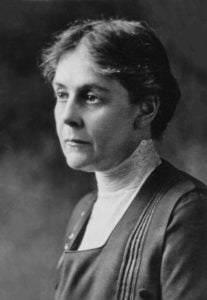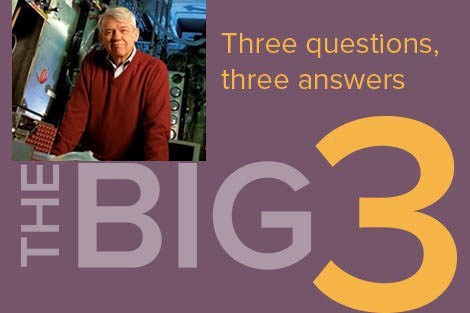February 11, 2020 – Joseph Brain, Cecil K. and Philip Drinker Professor of Environmental Physiology at Harvard T.H. Chan School of Public Health, recently co-authored the book The Education of Alice Hamilton (Indiana University Press). Hamilton, Harvard’s first female faculty member, was appointed assistant professor of industrial medicine at the Medical School in 1919. She and the rest of the Division of Industrial Hygiene became part of the School of Public Health in 1922, when it replaced the Harvard MIT School for Health Officers.
In addition to marking the centennial of Alice Hamilton’s appointment, what inspired you to write a book about her?

I first heard about her when I was a graduate student at Harvard, first in the Division of Engineering and Applied Physics, now known as SEAS, and then here at Harvard T.H. Chan School of Public Health. The more I learned about her, the more I admired her. By the time she was recruited by Harvard, she had been doing groundbreaking studies in occupational health and toxicology for 20 years. Moreover, she was not just a great scientist and epidemiologist, she was a pacifist and a suffragist, and shaped labor protection laws.
In the book, after describing her Harvard years, we then go back and look at what shaped her scientific skills and her commitment to social reform.
What did you learn about her during your research?
Dr. Hamilton was self-educated and home-schooled. She was raised by strong women who instilled in her independence and the importance of giving back. She and her three sisters all remained single—a sensible option at the time for women who wanted careers. All went on to be very accomplished in their respective fields.
Alice was always attracted to science and medicine. When she asked her father for permission to go to medical school, he questioned whether she was tough enough. They made a bargain. She would first study for a year at a small medical school in Fort Wayne, Indiana, near their home. She was more than up for the challenge. A year later, her father agreed that she should have access to the best medical education open to women. She went on to excel at the University of Michigan and Johns Hopkins, and continued her studies in Germany with Paul Ehrlich, who went on to win a Nobel Prize.
A very important part of her education came during the years she spent at Hull House—the renowned settlement house in Chicago made famous by Jane Addams. There she lived with immigrants and the poor. As she provided medical care, she came to realize that jobs were a major source of injury and illness for workers and their families. For example, men who worked with asbestos or lead exposed their families through the work clothing they brought home to be washed.
She and her colleagues collected and analyzed a remarkable amount of data on the population they served—including demographics, income, ethnicity, and disease outcomes. The epidemiological maps they made look like the kind of maps we make today with spatial analysis technologies.
When the founders of our School realized that they needed a leader in occupational health, they discovered that Alice was by far the best candidate. The University at first said that Harvard only educates men—and of course, only men can educate men. But our school’s leaders persisted. Future SPH Deans David Edsall and Cecil Drinker, who were with HMS at the time, persisted in advocating for her and for breaking the gender barrier. In the fall of 1919, the University relented.
Alice had a very distinguished 20-year career here. When she retired, she was still an assistant professor—those of us in the Alice Hamilton fan club wonder why. For another 30 years, she continued to make U.S. factories and mines safer.
What can Alice Hamilton teach today’s public health students?
She is a model of the responsibilities of privilege, which is a combination of adequate wealth and education. If you have both, you need to deploy them to make permanent positive inclusive change for all.
Dr. Hamilton’s whole life was about making a difference. She wasn’t just interested in learning about and measuring injury and disease caused by occupations. Her work was unfinished until she translated her science into action and national policy. And that’s the kind of research we should do and the kind of careers we should seek.
Learn more
Op-ed: Celebrating Alice Hamilton, who pioneered national safety standards (Harvard Chan School news)
Public health pioneer Alice Hamilton documented dire health conditions in post-World War I Germany (Harvard Chan School news)
Photo: Kent Dayton
